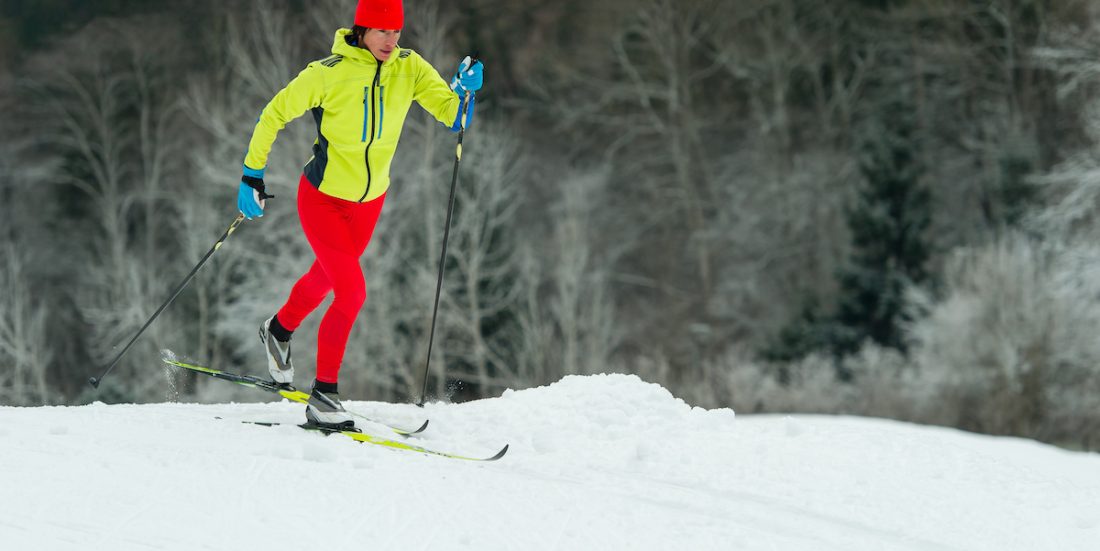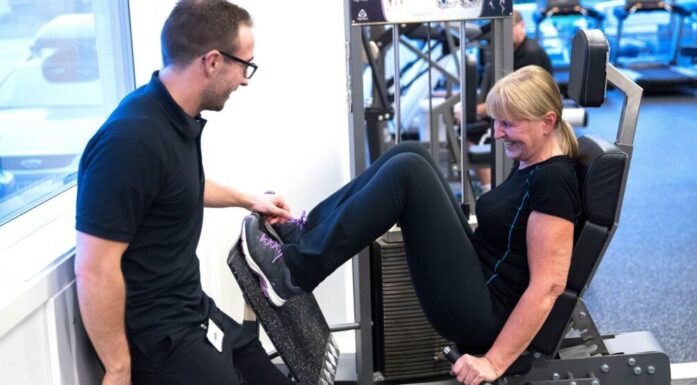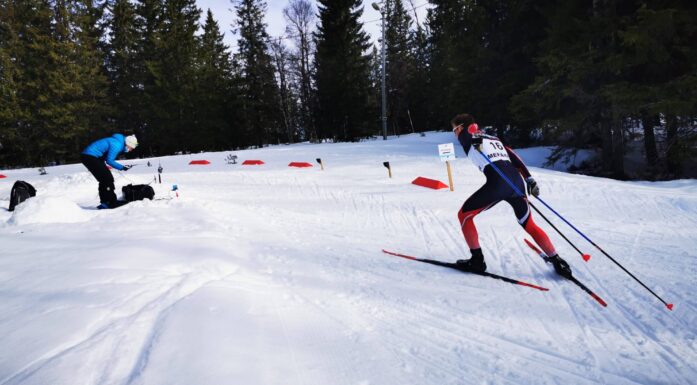How to train like the world’s most successful female cross-country skier
If you want to be as fast or as strong as the world’s most decorated female winter Olympian ever, you’ll have to train a lot — more than 900 hours a year. But don’t worry — most of that training will be low intensity.
Marit Bjørgen is a Norwegian cross-country skier who has won six Olympic gold medals, 18 World Championship gold medals and 110 World Cup victories. The 37-year old is competing in the 2018 Olympics in PyeongChang and is already the most decorated female Winter Olympian ever.
Wouldn’t it be fun to peek behind the curtains to know how she trains? A team of researchers from the Norwegian University of Science and Technology (NTNU) and Nord University has done just that.
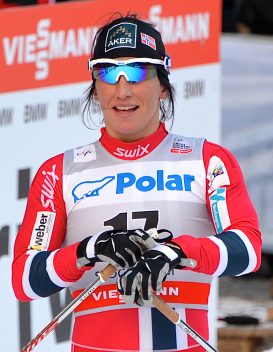
Marit Bjørgen at the Royal Palace Sprint, part of the FIS World Cup 2012/2013, in Stockholm on March 20, 2013. Marit Bjørgen came second in the race. Photo: Frankie Fouganthin – Own work. CC BY-SA 3.0 via Wikimedia Commons
Marit Bjørgen openly shared all of her training information with researchers Guro Solli, a PhD candidate at NTNU and Nord University, Dr. Espen Tønnessen from the Norwegian Olympic Federation and Professor Øyvind Sandbakk from NTNU’s Centre for Elite Sports Research. A summary of what the researchers found has recently been published in Frontiers in Physiology.
“Marit Bjørgen is a unique athlete, she is the most successful female winter Olympian ever and has an interesting training history,” said Solli, who is analysing Bjørgen’s training data for her dissertation. “She has experimented with different training models. And she wanted to help future athletes and coaches by sharing her knowledge and training data.”
- You might also like: A future for skiing in a warmer world
Unprecedented access
Bjørgen, of course, didn’t just appear out of nowhere as a successful cross-country skier. She grew up on a farm in central Norway, and started racing at age 7. She told NRK, the Norwegian Broadcasting Corporation, she didn’t lose a race until she turned 13.
She started racing on the world circuit at age 19, with the ups and downs you might expect as a young athlete learns how to harness her talent. Her biggest years were from 2010-2015.
From the time Bjørgen turned 20, she kept daily training diaries and underwent physiological tests to determine different fitness measures, such as her maximal oxygen consumption and her speed at her anaerobic threshold, both of which are considered important factors for performance in endurance sports.
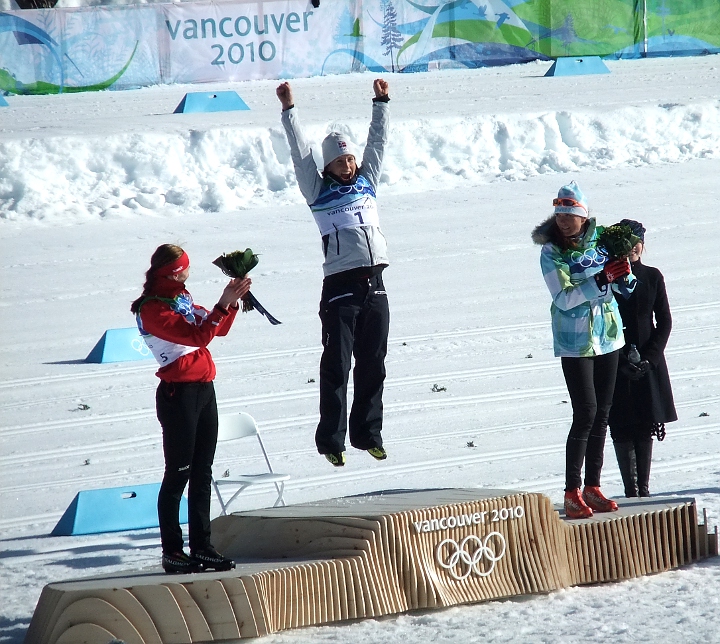
Marit Bjørgen on the podium during the 2010 Winter Olympics in Vancouver. Photo: Ecthelioniii (Own work) [CC BY-SA 3.0], via Wikimedia Commons
Sandbakk points out that one of the most important finding from the recent study was how Bjørgen gradually increased her training load in the years before her most successful period, during which she trained 940 hours per year.
“This supports previous findings that highlight the importance of athletes putting in a lot of hours of training if they want to succeed in endurance sports,” he said.
The researchers also provided detailed information about how Bjørgen trained at altitude and how she tapered her training in the final weeks before major championships.
- You might also like: Poling to victory
A focus on five successful years
All told, the researchers looked at 8105 of Bjørgen’s training sessions from 2000 to 2017, of which 7642 were workouts and 463 were competitions.
This provided the researchers important context for their analysis of Bjørgen’s five most successful years (from May 2010 to April 2015).
During this period, Bjørgen won 63 individual World Cup victories, two gold medals at the 2014 Olympics and seven gold medals in three World Championships.
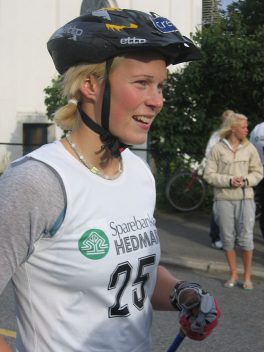
Guro Strøm Solli, who has studied the training records of champion cross-country skier Marit Bjørgen, is no stranger to training herself. Solli has competed internationally with the Norwegian women’s team. By Cato Edvardsen – Own work, CC BY-SA 3.0, via Wikimedia Commons
So beyond raw talent and determination, what’s her secret?
Lots of hours, lots of endurance training
First of all, Solli said, Bjørgen trained a lot —a total of 13600 hours during the 17 years the researchers investigated.
“This is an average training volume of 70 hours a month and 15 hours a week” over nearly two decades, Solli said. “This long-term continuity of high training loads combined with her high performance is unique.”
Additionally, Bjørgen was very careful in how she built up her capacity to train, Solli said.
“She went from around 500 hours per year as a young racer up to around 700 hours at the time she won her first gold medal at age 23,” she said. “She then increased her training to 940 hours a year during her five most successful years from when she was 30 to 35 years old.”
Most of her workout time— 91 %, or about 850 hours on average — was spent in endurance training. Eight per cent of her training was strength training, with just 1 % of her time spent in speed training.
That division between different training intensities is all the more striking when you realize that Bjørgen has won not only long-duration ski races of 30 km, but also relays and sprints which require explosive speed and power.
“Both cross-country skiing training and competitions involve varied terrain and the use of different techniques, including large fluctuations in speed and a varying load on the upper and lower body,” Sandbakk said. “Skiers also have to train differently in the summer by running, roller skiing and cycling because there is no snow. That makes a cross-country skier’s training a sophisticated puzzle of training sessions of different forms, intensities and organization.”
- You might also like: Proper poling technique decides Olympic winners
Most sessions were an hour or longer
During the period the researchers focused on, Bjørgen performed 76 % of her endurance training sessions at a low intensity, which the researchers defined as between 60 and 87% of her maximal heart rate.
While her training intensity might have been low, the number of hours she spent working out at this intensity is impressive. Just 4 % of these low intensity sessions were under 50 minutes long, while 42 % were between 50-90 minutes and 23 % were more than 150 minutes long.

For most of the winter, settings like these are the equivalent of Marit Bjørgen’s workplace. Photo: Colourbox
Another 7% of her endurance sessions were at moderate intensity, or at 87-92 % of her maximal heart rate, typically performed as interval sessions where Bjørgen repeated five intervals of 7-to-8 minute periods, with 1-2 minutes of rest in between each interval.
The remaining 17 % of her sessions were performed at high intensity, with a heart rate over 92% of maximum. These sessions were typically either interval training or competitions. Her most typical high-intensity interval session was composed of five workout intervals of 4-5 minutes with 2-3 minutes of rest in between.
This changed, of course, during the annual competition season, with Bjørgen logging more long duration sessions during the preparation period and shorter sessions during the competition phase.
An early focus on high-intensity training
Bjørgen’s focus on low-intensity training was in contrast to the years before her most successful period, were she focused more on high-intensity training, Solli said. At this time, she relied on a very high number of high-intensity sessions during concentrated periods.
Solli said this early period with lots of high-intensity sessions led to rapid improvements in Bjørgen’s performance.
“But then her improvements stagnated after a few years,” Solli said.
Bjørgen’s next major improvement in her performance happened after she switched to a more even distribution of high-intensity training and to relatively large amounts of low-intensity training, Solli said.

The Norwegian cross-country ski team always goes to train at altitude at some point in the training season. Here, a couple of non-racers enjoy the trails in Fanes Senes Braies, Dolomites, Italy. Photo: Colourbox
“While Marit’s high-intensity and medium-intensity training levels are similar to what has been previously reported in other world-class XC skiers, the volume of her low-intensity training is remarkably high,” Solli said.
As an elite skier, Bjørgen was also able to train at altitude in preparation for races, something that is not an option for the average amateur athlete. And she spent roughly 60 % of all of her annual workout time in ski-specific training, either on snow or on roller skis.
A healthy body image
One aspect of Bjørgen’s success, Solli thinks, is that she has been able to clearly balance her training with maintaining a healthy body weight. The 167 cm tall athlete has always kept her weight at around 65 kg.
It can be tempting for athletes from all disciplines to want to improve their performance by losing weight or keeping their weight extremely low, but that’s not a prescription for long-term success, Solli says.
“Marit shows that you should be able to preform at a top level and still be healthy. Being a professional athlete is extremely demanding, and you can debate how healthy it is to continually be pushing your body to its limits, but she is an example that it’s possible,” Solli said.
Reference: The Training Characteristics of the World’s Most Successful Female Cross-Country Skier Front. Physiol., 18 December 2017 | https://doi.org/10.3389/fphys.2017.01069
